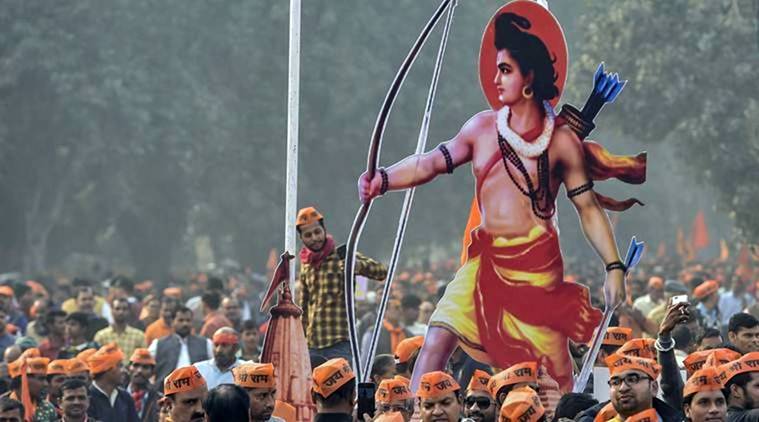Inscriptions on a stone slab “recovered” from the rubble of the demolished Babri Masjid in Ayodhya pointed to the existence of a 12th century Vishnu temple at the site of Babri Masjid, the counsel for Ramlalla told the Supreme Court on Tuesday.
Senior counsel C S Vaidyanathan, appearing for the deity, told a five-judge Constitution Bench headed by Chief Justice of India Ranjan Gogoi that the Sunni Wakf Board and others on the mosque side had disputed recovery of the slab but had not questioned its authenticity. He was responding to a query from the bench, also comprising Justices S A Bobde, D Y Chandrachud, Ashok Bhushan and S Abdul Nazeer. The bench is hearing appeals against the September 30, 2010 judgment of Allahabad High Court.

Justice Chandrachud drew the counsel’s attention to the HC judgment linking the disputed site to the 12th century and sought to know how this was done.
Vaidyanathan replied that the slab was 115 cm long and 55 cm wide. The inscription on it was in classical Sanskrit and, as deciphered by epigraph expert K V Ramesh, spoke about the existence of a Vishnu Hari temple at the site in Ayodhya, which was the capital of Saketamandala kingdom ruled by King Govindachandra, the counsel said.
The temple was constructed in the 12th century, he said.
On doubts being raised about the recovery of the slab, Vaidyanathan said this was because the witness to the recovery was a reporter, Ashok Chandra Chatterjee, who worked with Panchajanya magazine, and others had doubted his statement by contending that the magazine was run by an organisation affiliated to the RSS.
The mosque side, Vaidyanathan submitted, had taken the stand that the recovery was doubtful. According to them, the slab was available in some museum and had been planted at the site, he added.
Story continues below this ad
Read | The other Ayodhya trial: Case against LK Advani, Murli Manohar Joshi, Uma Bharti is crawling
“Even assuming it was found in museum, it points to the existence of a temple…there is intrinsic evidence in the inscription about the existence of the temple in Ayodhya,” he said.
The bench then wanted to know whether any question was put to the witnesses — Ramesh and Chatterjee — regarding the authenticity of the inscriptions. Vaidyanathan replied that there was “no dispute with regard to authenticity of the inscription, correctness of the translation, or summary of contents”.
He referred to photographs of Babri Masjid taken in 1950 and said the particular slab was on the western wall but not very clearly visible, as it was stuck between other slabs.
Story continues below this ad
According to the reporter’s statement, he was at the spot when the mosque was demolished on December 6, 1992, and had seen the slab being recovered from the rubble. This slab was then moved to Ramkathakunj, and subsequently the police took custody, the counsel said, quoting him.
Vaidyanathan also referred to the testimony of some witnesses, including Muslims, to establish his case.
Vaidyanathan said that another witness, Mohammed Kasim Ansari, had said, “What I call Babri Masjid, they (Hindus) call Ramjanmabhoomi.” Even though the mosque was built, Hindus continued worshipping there, he added.

 Justice Chandrachud drew the counsel’s attention to the HC judgment linking the disputed site to the 12th century and sought to know how this was done.
Justice Chandrachud drew the counsel’s attention to the HC judgment linking the disputed site to the 12th century and sought to know how this was done.






